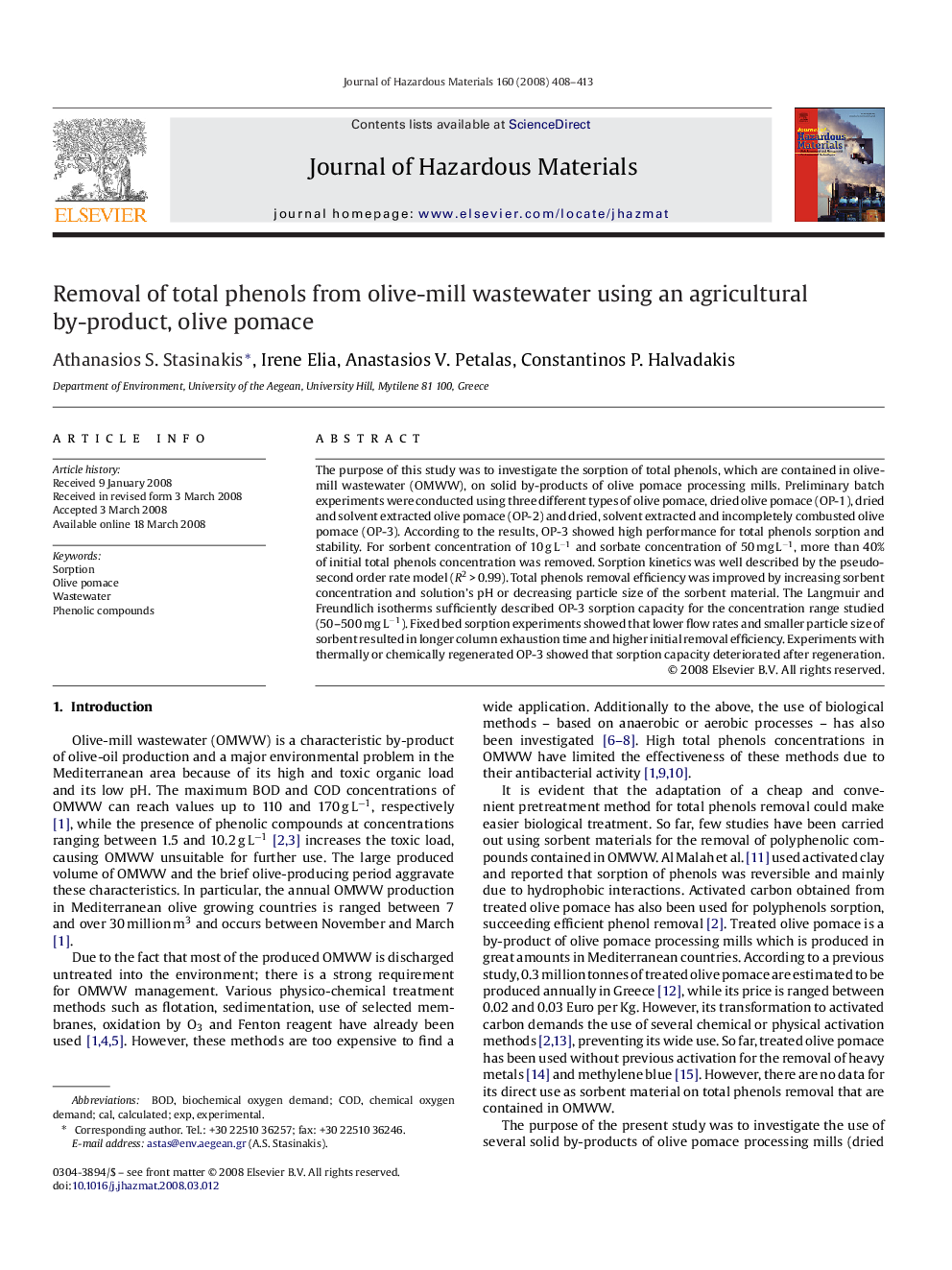| Article ID | Journal | Published Year | Pages | File Type |
|---|---|---|---|---|
| 582733 | Journal of Hazardous Materials | 2008 | 6 Pages |
Abstract
The purpose of this study was to investigate the sorption of total phenols, which are contained in olive-mill wastewater (OMWW), on solid by-products of olive pomace processing mills. Preliminary batch experiments were conducted using three different types of olive pomace, dried olive pomace (OP-1), dried and solvent extracted olive pomace (OP-2) and dried, solvent extracted and incompletely combusted olive pomace (OP-3). According to the results, OP-3 showed high performance for total phenols sorption and stability. For sorbent concentration of 10 g Lâ1 and sorbate concentration of 50 mg Lâ1, more than 40% of initial total phenols concentration was removed. Sorption kinetics was well described by the pseudo-second order rate model (R2 > 0.99). Total phenols removal efficiency was improved by increasing sorbent concentration and solution's pH or decreasing particle size of the sorbent material. The Langmuir and Freundlich isotherms sufficiently described OP-3 sorption capacity for the concentration range studied (50-500 mg Lâ1). Fixed bed sorption experiments showed that lower flow rates and smaller particle size of sorbent resulted in longer column exhaustion time and higher initial removal efficiency. Experiments with thermally or chemically regenerated OP-3 showed that sorption capacity deteriorated after regeneration.
Keywords
Related Topics
Physical Sciences and Engineering
Chemical Engineering
Chemical Health and Safety
Authors
Athanasios S. Stasinakis, Irene Elia, Anastasios V. Petalas, Constantinos P. Halvadakis,
